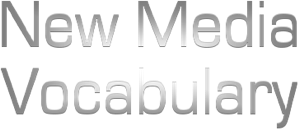
New Media Vocabulary: Promo
“A promo, shorthand for promotion, are a form of commercial advertising used in broadcast media, either television or radio; promos are generally used to promote a program airing on a television station, radio station, television network or radio network. The usage is to try to bring a showing to a specific set of people.
Promos typically run a standard length of about 30 seconds, though occasionally some can at times last as short as five seconds or as long as 90 seconds. Most promos commonly consist of select clips of segments from an upcoming program (television or radio series, film, event, etc.), however some television promos (particularly for an upcoming television series) utilize a monologue format in which a star or host of the program breaks the fourth wall. Most radio promos utilize this format as well, with a host of the program discussing the show itself, though some feature audio clips from past editions of the radio broadcast. Television station newscasts promote (a) select news segments to be featured in an upcoming newscast, such as an investigative report or special-interest feature piece.[1] — Wikipedia.org
Promos are a large part of promoting any New Media, be it a blog, podcast or YouTube Channel. In the case of YouTube, their new Unsubscribed Trailer is basically a built-in promo for your channel that auto plays to those visitors who are not currently subscribed to your channel.
Audio podcasters are big users of promos, as it gives people a taste of their show along with basic information on how to listen and subscribe. Promos are often shared among podcasters in order to expose one show’s listeners to another show that might interest them.
You can find one sample promos over on the Podcast Pickle site. They can give you some ideas of how you might format your own promo and the type of information you should included there.
For more information on Promo:
Previously on New Media Vocabulary:























